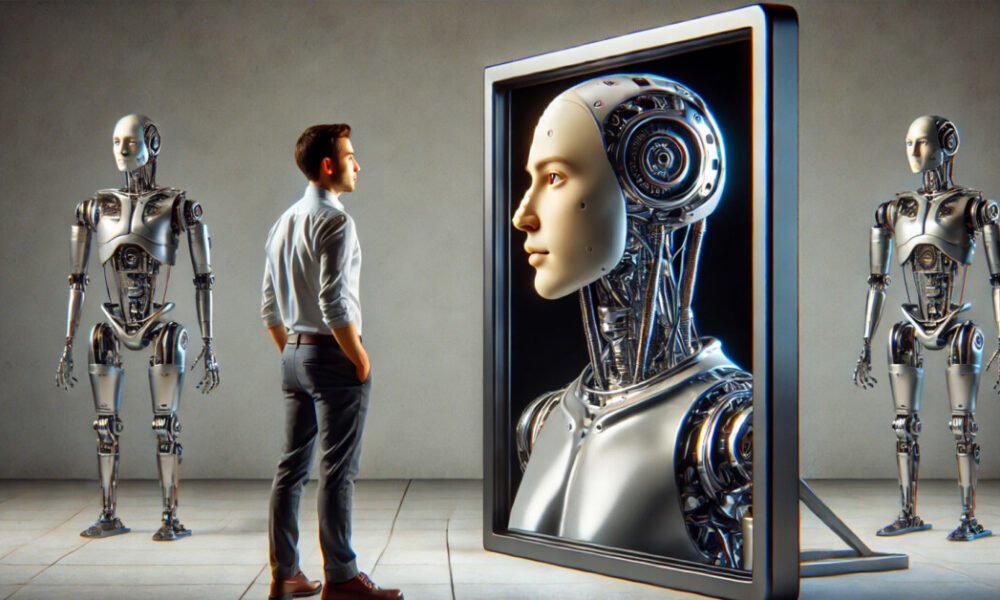The Problem with AI Anthropomorphism in the Star Wars Universe: A Critical Analysis
OPINION In the fictional galaxy of Star Wars, artificial intelligence (AI) is often overlooked and dismissed as mere ‘machines’ by the human characters. However, a closer look reveals a complex relationship between humans and AI in the iconic science-fantasy franchise.
In the Star Wars universe, robots are designed to be highly anthropomorphic, with the ability to engage with human culture and form emotional bonds with people. Despite this, human characters in the series often treat AI with indifference or even as slaves.
While this depiction of AI may seem outdated, it has remained a consistent theme throughout the franchise, even as modern media explores more nuanced relationships with AI. A recent paper from Stanford, Carnegie Mellon, and Microsoft Research raises concerns about the potential harm of anthropomorphism in AI systems.
Challenging Human-Computer Communication
The paper highlights the dangers of blurring the lines between human and artificial communication, emphasizing the need to develop tools to address anthropomorphic behaviors in AI. Concerns include people attributing human traits to AI systems, leading to emotional dependence and potential harm.
Systems like Replika, a chatbot platform, have been shown to elicit emotional attachment from users, posing risks of addiction and impacting real-life relationships. The authors argue for a closer examination of the social impact of anthropomorphism in AI systems.
Defining Human-Like Language
Anthropomorphism in AI is closely tied to language, a distinctly human function. The challenge lies in distinguishing between human and non-human language in AI-generated content, especially as AI systems become more sophisticated.
The paper also addresses public skepticism towards AI-generated content that mimics human language, emphasizing the need for clear distinctions between human and AI-generated communication.
Avoiding Misrepresentation
The authors caution against AI systems misrepresenting themselves as human, citing cases of AI claiming human experiences or emotions. They argue for greater transparency in AI communication to prevent misleading users.
Furthermore, the paper raises concerns about users mistaking AI systems for having sentience or human-like qualities, highlighting the importance of establishing clear boundaries between anthropomorphic AI and genuine human interactions.
Looking Ahead: Establishing Guidelines for AI Anthropomorphism
As AI technology continues to advance, defining the parameters of anthropomorphism in AI systems becomes crucial. The paper calls for the development of precise terminology to differentiate between human and AI communication, bridging the gap between psychology, linguistics, and anthropology.
While debates on AI anthropomorphism are not new, the paper underscores the growing relevance and social implications of this issue in the coming years. By rethinking our approach to AI interactions and setting clear boundaries, we can navigate the complexities of human-AI relationships more effectively.
Conclusion
The portrayal of AI in the Star Wars universe sheds light on our evolving relationship with technology and the need to address the dangers of anthropomorphism in AI systems. By critically examining our interactions with AI and establishing guidelines for communication, we can shape a more informed and responsible future for human-AI interactions.
-
What is anthropomorphism and why is it important to moderate it in AI platforms?
Anthropomorphism is the attribution of human-like qualities or behaviors to non-human entities, such as AI systems. It is important to moderate anthropomorphism in AI platforms to avoid giving users false perceptions of the capabilities and limitations of the AI system. -
How can anthropomorphism impact user interactions with AI platforms?
Anthropomorphism can lead users to overestimate the intelligence and understanding of AI systems, which can result in unrealistic expectations and frustration when the system is unable to perform as expected. It can also lead to users trusting the AI system too much, potentially leading to errors or misuse. -
What are some ways to moderate anthropomorphism in AI platforms?
One way to moderate anthropomorphism in AI platforms is to clearly communicate the limitations of the system to users, and to avoid using human-like names or voices for the AI. It is also important to provide users with regular feedback on the AI’s performance and capabilities to help manage their expectations. -
Are there potential benefits to incorporating some level of anthropomorphism in AI platforms?
While moderate anthropomorphism can make AI systems more relatable and user-friendly, it is important to strike a balance to avoid misleading users about the true nature of the system. Incorporating anthropomorphic elements can help users feel more comfortable interacting with the AI, but it should be done judiciously. - How can developers and designers ensure that anthropomorphism in AI platforms is kept in check?
Developers and designers can conduct user testing to gauge user reactions to anthropomorphic elements in AI platforms, and make adjustments as needed based on feedback. They can also consult with psychologists or human-computer interaction experts to better understand the potential impacts of anthropomorphism on user interactions.

